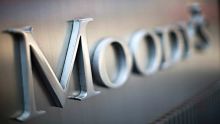NSW Treasurer Dominic Perrottet has unveiled budget surpluses worth almost $12 billion, underpinned by stamp duty from a booming property market and asset privatisations as well as $23 billion worth of cost cuts.
More BusinessDay Videos
NSW budget: 'The envy of the western world'
Treasurer Dominic Perrottet unveils a budget surplus worth almost $12 billion, largely from property stamp duty and asset privatisations. Vision courtesy ABC
Describing his first state budget as "the envy of the western world", Mr Perrottet outlined measures squarely focused on the provision of "social infrastructure".
Apart from the surpluses, his biggest new announcement on Tuesday was more spending on hospitals, with $720 million to upgrade Prince of Wales Hospital at Randwick.
This adds to $632 million for Campbelltown Hospital, $534 million for Tweed Hospital and $576 million for Nepean Hospital and $341 million for Concord Hospital in the budget that has been previously announced.
The expenditure on health comes after the government on Monday said it would spend $2.2 billion over five years on 123 new and upgraded schools across NSW to create 32,000 student places and 1500 classrooms.
Combined with spending promised in last year's budget, it means total expenditure on education infrastructure will be $4.2 billion over the next four years.
Mr Perrottet also announced that from January next year parents will be eligible for a $100 "active kids rebate" per child per year to cover registration and membership fees for sport and swimming lessons.

During his press conference Mr Perrottet defended the size of the rebate, insisting it will "build communities" and declaring it "the soul of the budget".
Small businesses and farmers will also benefit from tax cuts worth $330 million over four years.
From January next year businesses with a turnover of less than $2 million a year will be exempt from paying duties on insurance for work vehicles, professional indemnity and public liability.
For farmers, the duty on crop and livestock insurance will be abolished.
The budget also contains a $1.3 billion "regional growth fund" to create jobs and build regional sporting and cultural infrastructure.
The budget papers confirm a $4.5 billion surplus in 2016-17, forecast to drop to $2.7 billion in 2017-18, $2.1 billion in 2018-19 and $1.5 billion in 2019-20.
The 2016-17 surplus is $856.9 million higher than forecast in last year's budget, thanks largely to stamp duty revenues from the part-privatisation of electricity companies Ausgrid and Endeavour Energy.
The $11.7 billion in actual and forecast surpluses to 2019-20 will be underpinned in part by savings achieved by increasing the efficiency dividend – or budget cut – imposed on government departments from 1.5 per cent to 2 per cent for three years from 2018-19.
This is expected to save $547 million.
Along with existing measures, including the 2.5 per cent cap on public servant wage increases and procurement savings, the government anticipates savings of $23 billion over four years between 2017-18 and 2020-21.
However, the revenue side of the budget has taken a hit due to NSW's share of the GST continuing to fall.
Under the present system NSW's share of GST is set to fall to 25.5 per cent – or by $13.1 billion – by 2020-21.
This is worse that the forecast in last year's budget which said NSW's share is set to fall to 25.9 per cent – or by $10.8 billion – by 2019-20.
The budget papers confirm that under a per capita system of GST distribution pushed for by NSW the state would be $14.7 billion better off in the four years to 2020-21.
They say that net debt, currently below zero at -$7.8 billion, is set to rise to $18.6 billion by 2021, as the government borrows to fund its infrastructure program.
Elsewhere, the budget includes the previously announced housing affordability package targeting first home buyers.
From July 1, first home buyers of existing and new properties costing up to $650,000 will be exempt from paying stamp duty – up from $550,000 and adding existing homes to the scheme.
Buyers of first homes worth between $650,000 and $800,000 will receive stamp duty discounts – up from between $550,000 and $650,000 and again including existing homes.
To help fund the package, the stamp duty surcharge for foreign investors will be doubled to 8 per cent and the land tax surcharge lifted from 0.75 per cent to 2 per cent.
However, the budget papers reveal that property development companies that are foreign-owned but based in Australia will be eligible for a refund on the surcharges if they sell their developed properties within five years.
In his speech to parliament, Mr Perrottet said the budget contained infrastructure spending of $73 billion over the next four years.
"That's the equivalent to building 124 Harbour Bridges – a once in a generation investment that will transform our state forever," the Treasurer said.
Later, during his media conference, Mr Perrottet celebrated the budget's strong position.
"This budget is the envy of the western world!" he declared.
"Not only do we have strong surpluses over the next four years, we have the biggest infrastructure investment going on across this country than every before."
However, opposition leader Luke Foley branded the government's hospitals spending announcements as "a cruel hoax" due to their expected completion date in the mid-2020s.
"They expect us to believe 14 and 15 years after they first came to office they'll deliver upgraded hospitals and people are meant to be grateful for that?" he said.
Shadow Treasurer Ryan Park said the government should use some of its surging stamp duty receipts to accelerate the hospital upgrades.
Mr Foley also said it was a "budget of wrong priorities" due to spending on the "disastrous" George Street and Eastern Suburbs light rail and the Northern Beaches Tunnel.















